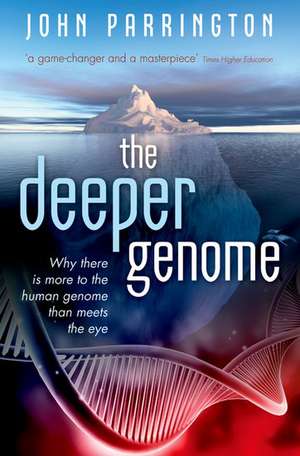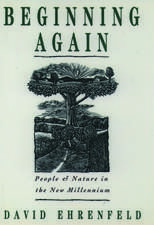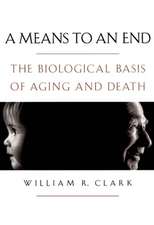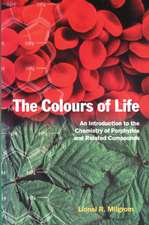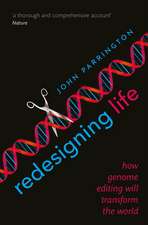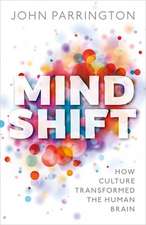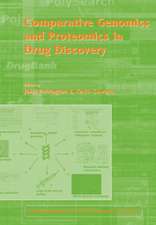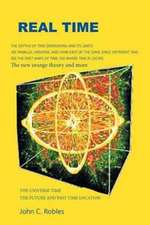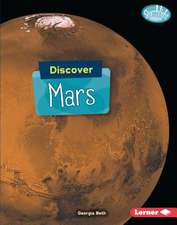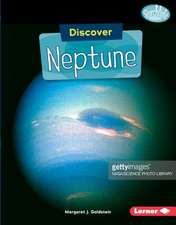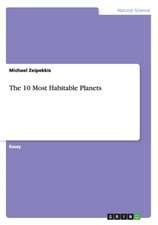The Deeper Genome: Why there is more to the human genome than meets the eye
Autor John Parringtonen Limba Engleză Paperback – 24 aug 2017
Preț: 68.96 lei
Preț vechi: 82.39 lei
-16% Nou
Puncte Express: 103
Preț estimativ în valută:
13.20€ • 13.67$ • 11.01£
13.20€ • 13.67$ • 11.01£
Carte tipărită la comandă
Livrare economică 10-17 martie
Preluare comenzi: 021 569.72.76
Specificații
ISBN-13: 9780198813095
ISBN-10: 0198813090
Pagini: 360
Ilustrații: 26 black and white illustrations
Dimensiuni: 130 x 196 x 22 mm
Greutate: 0.27 kg
Editura: OUP OXFORD
Colecția OUP Oxford
Locul publicării:Oxford, United Kingdom
ISBN-10: 0198813090
Pagini: 360
Ilustrații: 26 black and white illustrations
Dimensiuni: 130 x 196 x 22 mm
Greutate: 0.27 kg
Editura: OUP OXFORD
Colecția OUP Oxford
Locul publicării:Oxford, United Kingdom
Recenzii
A lively and engaging popuar science book... I recommend it.
It's a game-changer and a masterpiece for anyone interested in biology
... a good primer on the subtlety and complexity of the genome, especially the human genome, new facets of which emerge on a regular basis from labs around the world.
The Deeper Genome... provides an elegant, accessible account of the profound and unexpected complexities of the human genome, and shows how many ideas developed in the 20th century are being overturned.
A compelling book that will enrich your knowledge of genetics and its potential.
Overall, this is a faithful, engaging portrait of the twenty-first-century genome
This is a brilliant book - a wonderfully entertaining history of molecular biology and the surprises and controversies of a field still very much in flux, from early explorations to the emerging realisation that the human genome may be far more sophisticated than we ever imagined.
It's a game-changer and a masterpiece for anyone interested in biology
... a good primer on the subtlety and complexity of the genome, especially the human genome, new facets of which emerge on a regular basis from labs around the world.
The Deeper Genome... provides an elegant, accessible account of the profound and unexpected complexities of the human genome, and shows how many ideas developed in the 20th century are being overturned.
A compelling book that will enrich your knowledge of genetics and its potential.
Overall, this is a faithful, engaging portrait of the twenty-first-century genome
This is a brilliant book - a wonderfully entertaining history of molecular biology and the surprises and controversies of a field still very much in flux, from early explorations to the emerging realisation that the human genome may be far more sophisticated than we ever imagined.
Notă biografică
John Parrington is an Associate Professor in Molecular and Cellular Pharmacology at the University of Oxford, and a Tutorial Fellow in Medicine at Worcester College, Oxford. He is the author of Redesigning Life (Oxford University Press, 2016), and has published over 80 peer-reviewed articles in science journals including Nature, Current Biology, Journal of Cell Biology, Journal of Clinical Investigation, The EMBO Journal, Development, Developmental Biology, and Human Reproduction. He has extensive experience writing popular science, having published articles in The Guardian, New Scientist, Chemistry World, and The Biologist. As a British Science Association Media Fellow he worked as a science journalist at The Times for 7 weeks where he published 22 articles. He has also written science reports for the Wellcome Trust, British Council, and Royal Society.
